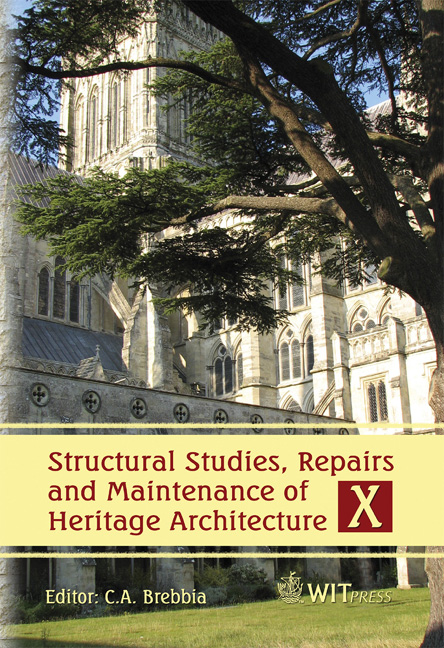Diagnostic Strategies For The Repair Intervention On Churches Damaged By Earthquakes: The Toscolano Maderno Monumental Complex
Price
Free (open access)
Transaction
Volume
95
Pages
12
Published
2007
Size
1,044 kb
Paper DOI
10.2495/STR070201
Copyright
WIT Press
Author(s)
L. Binda, S. Lagomarsino, S. Podestà, A. Saisi & C. Tedeschi
Abstract
This paper describes the methodology applied to two churches of the Garda area damaged by the 2004 earthquake in order to define the repair intervention. After interpretation of the damage causes, based on an accurate onsite survey and documentary research, the intervention strategies were supported by an onsite testing campaign. Keywords: seismic vulnerability, diagnosis, stone masonry. 1 Introduction At the end of 2004 an earthquake (5.2 on the Richter scale) hit the eastern part of the Lombardy Region in Northern Italy, beside the Garda Lake. No casualties occurred luckily, but many buildings were damaged and peculiarly affected was the cultural heritage (Binda [1]). The Authors were asked by the parish of Toscolano Maderno to carry out a preliminary after earthquake investigation on the Monumental Complex (Fig. 1), composed by two churches, St Andrew’s church and the Immacolata church. The aim was to assess the state of damage of the structures and the properties of the materials as a base for the repair and seismic improvement interventions. This was carried out according to the new Italian Seismic Code. The churches were built in different centuries and show several construction typologies. The investigation methodology was adopted by the Authors since the beginning of the 1990s and calibrated in different on site investigations on historic masonry buildings in the Umbria region after the earthquake of 1997 (Binda [2]) and in the Liguria region. It is based on the principle that knowledge
Keywords
seismic vulnerability, diagnosis, stone masonry.




